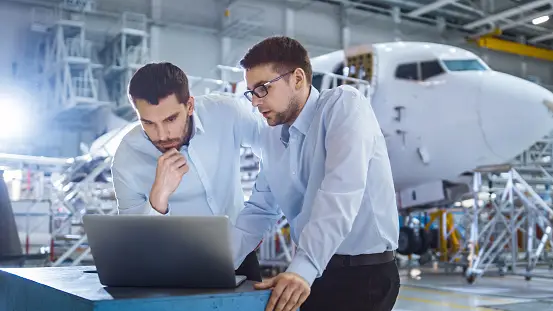
The realm of aircraft and aerospace represents one of the most dynamic and rapidly advancing sectors of human technology. It’s a space where the boundaries of physics, engineering, and imagination converge to push the limits of what’s possible, both within our atmosphere and beyond it. This exploration into the latest innovations within aircraft and aerospace use unveils how these advancements are not only propelling us faster and farther but also opening new avenues for exploration, connectivity, and environmental preservation.
The New Age of Materials
One of the most significant drivers of innovation in aircraft and aerospace is the development and application of advanced materials. These materials, including composites and alloys, offer unparalleled strength-to-weight ratios, enabling the construction of vehicles that are both lighter and more durable than their predecessors.
Composite Materials
Composite materials, such as carbon fiber reinforced polymers, have revolutionized aircraft design. By replacing traditional materials like aluminum, composites have led to significant reductions in weight, resulting in improved fuel efficiency and lower emissions. This is crucial in the quest for greener aviation and space travel, where every kilogram saved translates to a substantial decrease in fuel requirements and carbon footprint.
Metallic Alloys
New metallic alloys, capable of withstanding extreme temperatures and pressures, have opened up fresh possibilities for aerospace engines and airframes. These materials allow for higher performance in the harsh conditions of space and high-altitude flight, contributing to increased safety and longevity of aircraft and spacecraft.
Artificial Intelligence and Autonomous Flight
Artificial Intelligence (AI) is another frontier where aircraft and aerospace innovations are rapidly evolving. From pilotless drones to fully autonomous commercial aircraft, AI is setting the stage for a future where flight management and decision-making are increasingly automated.
Unmanned Aerial Vehicles (UAVs)
Unmanned Aerial Vehicles, or drones, have become ubiquitous, serving purposes ranging from aerial photography and agriculture to search and rescue operations. The integration of AI into UAVs has enhanced their capabilities, allowing for more complex navigation and operational tasks to be performed without direct human control.
Autonomous Commercial Aircraft
Although still in the early stages, the development of autonomous commercial aircraft promises to revolutionize the airline industry. By leveraging AI for flight operations, airlines could enhance safety, efficiency, and reliability. This technology could also address pilot shortages and reduce human error, which remains a leading cause of aviation accidents.
Space Exploration and Satellite Technology
The aerospace sector is witnessing a renaissance in space exploration, driven by both governmental space agencies and private enterprises. Innovations in rocket technology, satellite systems, and interplanetary travel are expanding our understanding of the universe and enhancing life on Earth.
Reusable Rockets
The development of reusable rocket technology, pioneered by companies like SpaceX, has dramatically reduced the cost of accessing space. These rockets can be launched, land back on Earth, and be refurbished for future missions, making space more accessible than ever before.
Satellite Constellations
Advancements in satellite technology have led to the deployment of large constellations of small satellites. These networks provide global coverage for communication, internet access, and earth observation, offering unprecedented connectivity and monitoring capabilities that benefit disaster response, climate monitoring, and global communications.
Automation in Ground Operations and Maintenance
The Automation Products Group (APG) is spearheading significant advancements in the realm of aircraft ground operations and maintenance. With a focus on integrating cutting-edge automation technologies, APG is transforming how airlines and airports manage their day-to-day functions, from baggage handling to aircraft maintenance.
Smart Ground Support Equipment
APG’s development of smart ground support equipment is revolutionizing airport operations. These automated systems ensure precise and efficient handling of aircraft on the ground, reducing turnaround times and improving overall operational efficiency. By leveraging IoT (Internet of Things) technology, ground support equipment can communicate in real-time, optimizing the coordination of various ground operations tasks.
Predictive Maintenance Tools
In the maintenance domain, APG is leading the way with predictive maintenance tools powered by AI and machine learning algorithms. These tools analyze data from aircraft sensors and systems to predict potential failures before they occur, significantly reducing downtimes and maintenance costs. This proactive approach to maintenance not only enhances aircraft safety but also ensures that fleets are more consistently available for service, contributing to the reliability and punctuality of air travel.
The continuous advancements in aircraft and aerospace technology are shaping the future of flight, making it safer, more efficient, and more accessible than ever before. Whether it be through new materials and propulsion systems, AI integration for autonomous flight, or innovations in space exploration and ground operations, these developments are propelling the industry towards a brighter future. With each breakthrough, we inch closer to realizing the full potential of flight and unlocking new possibilities for humanity. tial for exploration, connectivity, and discovery, forging new paths in the skies and beyond.


